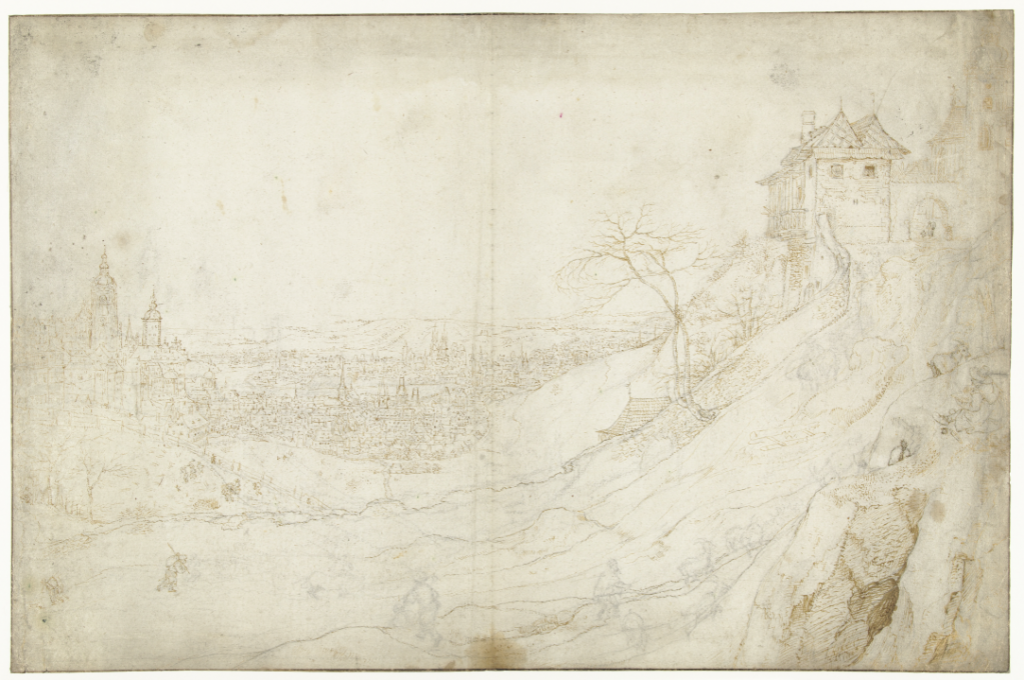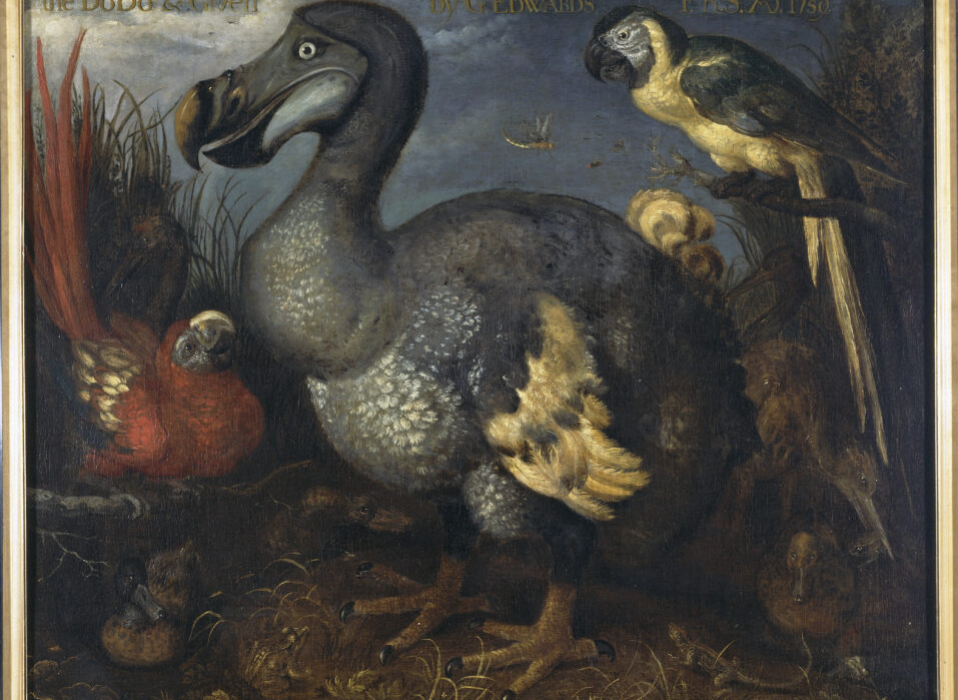Roelant Savery, the industrious Dutch Golden Age artist best known for his painting of the dodo bird, is the subject of a new exhibition at the Mauritshuis museum in the Hague, Netherlands. Titled “Roelant Savery’s Wondrous World,” the show celebrates the painter’s iconic depiction the now-extinct species, but also his work as the first Dutch artist to paint floral still lifes and street scenes.
Savery, who lived from 1578 to 1639, spent the better part of his career as a court painter to the Habsburg emperor Rudolf II in Prague. The emperor’s wealth and connections allowed Savery to explore a variety of subjects and genres. He produced some of the earliest known topographical drawings of the Czech capital, featuring landmarks like the Charles Bridge, Prague Castle, and the Strahov Monastery.
One of these cityscapes includes a small self-portrait, showing Savery, sketchbook in hand, recording his exotic surroundings.

Roelant Savery, View of Prague (1604–08). Rijksmuseum, Amsterdam (acquisition F.G. Waller Fund). Photo courtesy of the Mauritshuis.
Like other Dutch artists from the time, Savery enjoyed drawing ordinary people as they went about their day. These sketches range from a young man sleeping in the street, to a beggar wearing tattered clothes, to a group of well-dressed Jewish people on their way to the Neualtschul (“Old New”) synagogue in Prague, the latter of which constitute some of first artistic depictions of Jews in Europe.
Roelant Savery, Sleeping Young Man, Probably Pieter Boddaert (1606–07). P. & N. de Boer Foundation, Amsterdam. Photo courtesy of the Mauritshuis.
Roelant Savery, Vase with Flowers in a Stone Niche (1615). Mauritshuis, (acquired with the support of the VriendenLoterij, the Rembrandt Association, and Mr H.B. van der Ven, 2016). Photo courtesy of the Mauritshuis.
The exhibition also documents Savery’s a passion for flora and fauna. Some of his still lifes feature as many as 64 species of flowers. He frequently visited the imperial menageries, which included a deer park, a pheasant garden, and an area for Rudolf’s collection of lions. The Mauritshuis noted that, while many of these animals could never coexist in the wild, “in Savery’s paintings they peacefully lived side by side,” united by biblical and mythological symbolism.
Roelant Savery, Two Horses and Grooms (1628). City Collection, Abby Kortrijk. Photo courtesy of the Mauritshuis.
Although many of Savery’s paintings are not scientifically accurate, his most famous portrait of the dodo played an important role in the early scientific community. In the 19th century, biologist Richard Owen, the first superintendent of the Natural History Museum in London (which holds the painting), placed it next to an actual dodo skeleton to explain the creature’s confounding anatomy to students. To this day, the notoriety of the dodo and its evolutionary fate is closely linked to the popularity of Savery’s painting.
“Roelant Savery’s Wondrous World” is on view at the Mauritshuis, Plein 29, 2511 CS Den Haag, the Netherlands, through May 20.
Follow Artnet News on Facebook:
Want to stay ahead of the art world? Subscribe to our newsletter to get the breaking news, eye-opening interviews, and incisive critical takes that drive the conversation forward.

